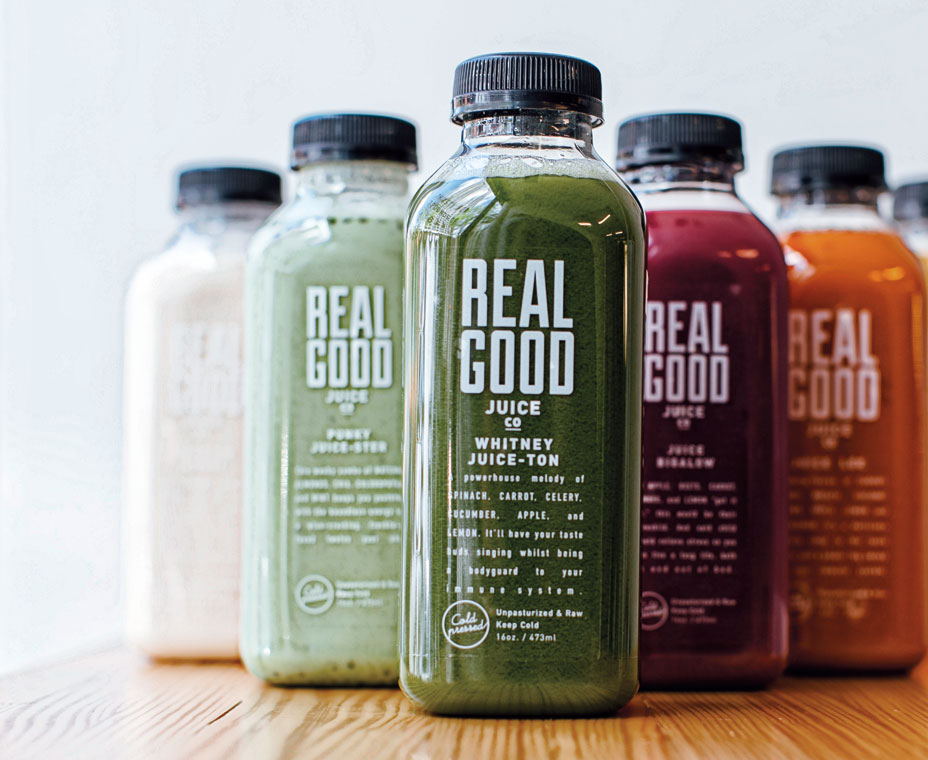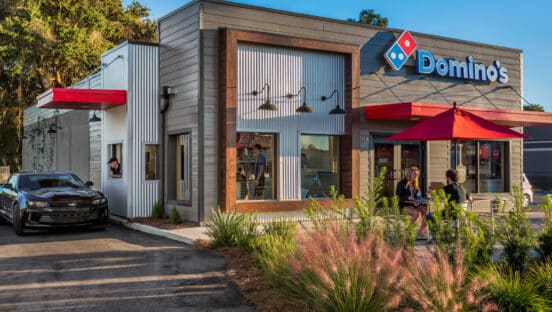Whether it’s açai, juice cleanses, or spiking your morning coffee with yak butter, our culture loves the notion of fast-track solutions to better health. But as more consumers than ever make eating decisions with wellness in mind, restaurants must strike a balance between touting foods’ verifiable health benefits without straying into snake-oil territory.
“Any new food that’s pitched as healthy is often overblown,” says Jordan Feldman, founder of Springbone Kitchen. “There isn’t one, magical cure-all out there. People would benefit greatly if they started thinking about food more as part of a healthy lifestyle.”
Feldman and cofounder Sam Eckstein opened Springbone last May in New York City as a nutrient-dense antidote to fad diets and sugary juice cleanses. The brand’s core product is drinking broth made from chicken or beef bones. The health benefits come from simmering the bones for at least 15 hours to extract collagen—the compound Springbone focuses most of its claims on, based on research-backed advantages of drinking about a cup of broth per day.
“For me, the highlight is always collagen, which is the form of protein that makes up connective tissue, which is found in bone broth,” Feldman says. Its uniquely beneficial amino acid composition includes glycine and proline, which have been linked to immunity, digestion, muscle repair, and cognitive function.
Feldman owns to the hype surrounding the term “collagen,” given its anti-aging connection, adding that bone broth isn’t immune to “miracle cure” claims, particularly among those looking to profit. At the same time, its relative simplicity and ubiquity across cultures makes it just as easy to pick on as a fad.
“With something that’s sort of a healthier evolution of chicken stock, there’s that side of ‘how are people suddenly calling this a miracle food?’” Feldman says. “But that’s also where its time-worn appeal originates. If you go back in history in any culture, there’s some form of boiling bones for hours and valuing that as an important part of the diet.”
To combat misleading positive and negative connotations about bone broth, the company instead refers to it as drinking broth. But the most effective tactic, Feldman says, is to be as transparent as possible. Springbone lists every ingredient for the broths on the menu.
Another category that’s seen its share of both cultish obsession and skepticism is juice, a growing market that pulls in $2.3 billion in annual revenue, according to market research firm IBISWorld. Chicago-based fast casual and juice bar Real Good Juice Co. takes all the buzz about juice with a bit of cheek—parodying juices with puns: “Feel as youthful as Juice-ton Bieber,” or “fight off disease, inflammation, and crime with Bluice Wayne’s superhero strength,” it claims on bottles.
This approach goes hand in hand with the 11-location chain’s mission to make real, good foods and drinks. The benefits come largely from cold-pressing its juices. “We take three pounds of locally sourced fruits and veggies and smoosh them real hard until they become juice, without losing any of their nutrients,” says founder Jon Schiff.
With the glut of juice bars has come added scrutiny, especially when it comes to added sugar, which is increasingly under fire. Real Good Juice works with a nutritionist on all new recipes to keep sugar levels of juice and almond milk low and never uses sugar-laden fruit juices. Schiff adds that the brand minimally uses fruits in its recipes since they are a major source of sugar.
Staff are trained to field questions on everything from sugar content to staving off hunger during a cleanse, or picking the right juice for hangovers. But the most common questions they get, Schiff says, relate to sourcing. As such, stores are all equipped with signage listing farmers.
This recent consumer embrace of sourcing transparency and more plant-heavy eating have made life both easier and harder for 10-year-old, contemporary macrobiotic concept M Café.
Its cuisine—centered on brown rice, beans, sea vegetables, and the Asian yin-yang philosophy of finding balance in life—is backed by thousands of years of Eastern traditional medicine, which re-emerged in the West as a 1960s counter-culture diet. It’s benefited from recent scientific research touting the anti-inflammatory and cancer-fighting benefits of central ingredients like whole grains, ginger, and turmeric. But consumers struggle to grasp the more philosophical, energy-focused benefits.
“I don’t think people have fully gotten macrobiotics, but I don’t think it really matters at this point because the basic tenets of eating a balanced diet rich in vegetables and whole grains are now in the collective consciousness,” says Lee Gross, consulting chef for the Los Angeles–based chain.
Yin and yang aren’t just hard to grasp for the average Western consumer, but also for the marketing department, which is tasked with taking thousands of years of information and distilling it into simple, attention-grabbing messages. M Café takes a less strict tact than raw vegan spots or plant-based concepts by offering veggie- and fish-based burgers and fries.
The brand has built up a library of the nutrition and healing properties of its ingredients for inquiring customers, but education in any sort of eatery—let alone a macrobiotic one—is a challenge.
“Some [people] just want to be fed, and if you start throwing yin and yang at them, it doesn’t help,” Gross says. “When people ask me, ‘What is the macrobiotic diet?’ the only way to answer is to size up who is asking it and what they’re they ready to hear.”
This story originally appeared in QSR’s July 2017 issue with the title “Healthy Skepticism.”





